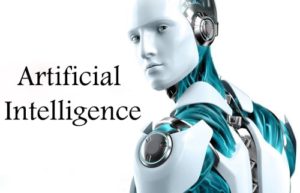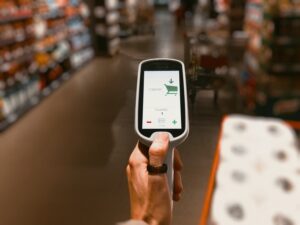The internet of things — smart devices that connect to the internet to share and receive data — is probably one of the biggest tech success stories of the past 10 years.
While most consumers know about IoT from consumer-oriented smart devices — like home assistants and security systems — the tech is also vital to many industries. From remote patient monitors to technology that collects factory data and controls massive industrial machinery, sending information over the internet has major benefits for all types of companies.
“The IoT revolution isn’t done yet. 2021 is likely to be another big year for it. We may soon see some of the biggest changes to date as developers find new ways to apply the tech to other industries.”
Based on the IoT industry’s current momentum and direction, these eight changes are some of the most likely to happen next year.
1. New, More Interoperable Smart Home Devices
As the range of smart home devices grows, interoperability — having tools from different developers that can “talk” with each other — will become much more important.
Manufacturers of IoT devices are making communication between them a key design consideration. It may soon be more normal to coordinate devices from a handful of developers rather than depend on all-in-one solutions that manage your home environment or provide extra security. Instead, smart homeowners may be able to string together complex IoT tech systems, customizing based on their needs and preferences.
2. Adoption of IoT Will Be Almost Universal
According to a new report from Microsoft, 91% of global businesses have adopted IoT technology, up from 85% the year before. The same report showed that more than half of all companies plan to invest even more in IoT technology going forward.
The growing range of IoT solutions — from office management tech to new maintenance tools — means that any business can benefit from IoT tech regardless of industry.
In 2021, it could be unusual to work with a company that doesn’t use the internet of things in one way or another. By the end of that year, we may see something close to 100% adoption of IoT.
3. 5G and Edge Computing Will Make Near-Real-Time Analysis Possible
After a slow rollout in 2019, major carriers are beginning to deliver 5G coverage on a national scale.
The speed of 5G, plus edge computing tech — which establishes nodes on the edge of the network that can be used for simple calculations — may make close-to-real time analytics in IoT devices possible. This ultra-fast communication will make the technology like driverless cars and real-time industrial sensors more practical going forward.
4. Hospitals Will Adopt a Range of IoT Tech
Over the past few years, developers have started to create various IoT devices for health care professionals. These devices — like internet-connected patient monitors or health-tracking wearables — make it easy for doctors and hospital staff to track a patient’s health, no matter where they are in the building. This could help staff check up on people across floors from one workstation or respond faster to a health crisis.
Shortly, real-time location systems for health care, which allow hospitals to track patients, manage assets and ensure compliance, may become central to the industry. At the least, it could become another valuable tool for health care professionals.
5. Cybersecurity Will Become a Serious Concern
As IoT devices proliferate, they’ll also become a bigger target for hackers. IoT security has improved significantly in the past few years, but they remain uniquely vulnerable to attacks. These safety risks make IoT devices a major opportunity for hackers wanting to break into a secure home or business network.
For developers and companies using IoT devices, keeping IoT tech secure will become critical. Investment in cybersecurity technology will likely grow to levels higher than anything we’ve seen so far.
6. Big-Name Retailers Will Implement Smart Store Technology
Following the semi-successful launch of Amazon’s line of cashier-less stores, Amazon Go, retailers have started to invest more in smart technology for their brick-and-mortar locations.
There are smart shelves, for example, outfitted with weight sensors and cameras to detect when products have run out. Similar tech can automatically check if there are carts that need to be pulled in or customers waiting to check out.
The data from these devices, coupled with AI-powered analytics, may make retail management more efficient. Right now, the tech is still experimental — but a few brands, like Walmart, are already testing smart store management at a few locations.
7. Predictive Maintenance Will Remain Key for Heavy Industry
Predictive maintenance is one of the more practical applications of the internet of things, and a decent number of industrial businesses already use it. The owner of heavy machinery or industrial infrastructure — like a robot arm, transformer or earth-mover — installs special sensors on certain pieces of high-value equipment.
These sensors gather data on operational characteristics, like vibration, sound or temperature. Over time, this data analysis can give owners a heads-up when equipment is behaving unusually — a sign that it may need emergency maintenance or repairs.
The predictive maintenance market has grown fast over the past few years, and industry analysts estimate it will be worth more than $12 billion by 2025 — up from just $4 billion in 2020. 2021 will probably be a key year for the industry — one where we’ll see continued adoption of predictive maintenance tools and platforms.
8. Self-Driving Car Tests Will Ramp Up
More companies are getting involved in self-driving vehicles in one way or another. Ride-sharing companies, Big Tech businesses and logistics experts are all invested in making vehicles that can drive themselves.
Demand for self-driving cars, as well as other issues — like the ongoing shortage of truck drivers — will likely push companies to expand their tests in 2021. These vehicles still need some serious testing, and its likely tests won’t be done for a while. However, some of those experimental autonomous cars could be on the road by the end of 2021.
How the IoT Could Reshape Businesses in 2021
The internet of things is likely to continue having a major influence on the economy through next year. New IoT devices, plus supporting techs like 5G and edge computing, mean that just about any business, regardless of industry, will be able to take advantage of what these tools can offer.
Consumers are also likely to see big benefits as well. While self-driving cars aren’t expected to hit the market until later in the decade, other consumer IoT devices will probably become much more user-friendly. For smart home fanatics who want to outfit their living space with gadgets that can adjust the temperature, dim lights and keep an eye on the front porch, big changes to interoperability will make life better than ever.










